If you’re looking for a simple, hole free crochet stitch that is easy to keep track of when making it, then the Sieve stitch is for you. In this stitch guide I will show you how to crochet the Sieve stitch with all the pictures that you need along with a video guide that you can follow along with too.
The Sieve Stitch is a type of floating crochet stitch that is similar to the Moss stitch. Floating stitches are made in the chain spaces of the row below to make them look like they are floating above the other stitches. This is a very even looking stitch that is hole free with a delicate flat texture.
This article contains affiliate links, I may receive a commission for purchases made through these links. As an Amazon Associate, I earn from qualifying purchases.
This stitch would be great for smaller items (after all it is a slow stitch to make since it is all single crochet stitches) like coasters and baby clothes. As the sieve stitch is a hole free stitch and makes for a close fabric that doesn’t open up easily especially if you use cotton yarn to make it. I imagine if you use a chunky yarn with the Sieve stitch it would look great as a scarf or a shawl or even as an adults sweater.
I used the Sieve stitch to make this short scarf with a beautiful multicolour yarn. You can find the free pattern here.
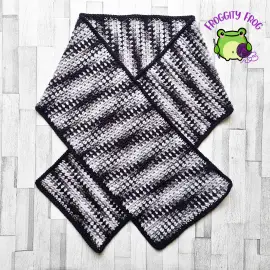
I used Rico Essentials Cotton DK for the piece I made in the picture below – a 100% cotton that is a DK / light worsted weight yarn. I like this brand of yarn a lot as it’s lovely and silky, has a great colour range to choose from and is a good, budget friendly price compared to other brands of cotton yarn out there.
This how to guide is part of Froggity Frog’s Stitch Vault collection. Have you seen all the other stitches in there? You can take a look here all the guides are free to access and maybe you will discover some new stitches to create for yourself.
The yarn I used in this stitch guide is Stylecraft Cotton Classique DK, a 100% cotton yarn. It’s a non mercerised cotton that is lovely and soft, but it can get a bit splitty if you frog it a couple of times. It does makes lovely cosy blankets though and is the yarn that got me hooked on cotton as my fibre of choice. I think I first got a ball of this yarn in a mystery bag I got off ebay, and it was a great yarn discovery for me and I’ve been loving using this yarn ever since.
I also used my trusty Clover Amour hooks which are perfect if you are looking for a good value ergonomic crochet hook that won’t cause your hand to ache if you are crocheting for long periods of time. I’ve tried many different crochet hooks over the years, but I always end up coming back to my trusty Clovers. They just sit so well in my hand and never let me down.
How To Crochet The Sieve Stitch
Click here for the left hand video
Abbreviations
- Ch = Chain
- Slst = Slip stitch
- Yo = Yarn over
- St = Stitch
- Sk = Skip
- Sp = Space
- Sc = Single crochet
Your foundation chain is made of multiples of 2 plus 1 (plus 1 for your turning chain)
Row 1. In the 2nd ch from your hook make a sc (your turning chain does NOT count as a stitch in this row) *ch 1 and sk the next st, then make a sc in the next st* repeat between *and* so that the last st of the row is a sc.
It’s a good idea to make sure that your tension is loose when making your chains. If you don’t then your crochet could end up bunching up and not being as wide as it should be.
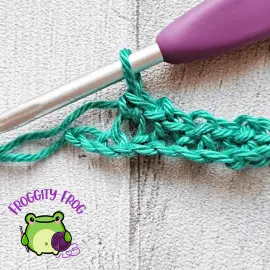
Row 2. Turn and ch1. Sk the first st of the row, *in the next ch sp make 2sc in the same space* repeat between *and*. Make a sc in the last st of the row.

Row 3. Turn and ch1. Make a sc in the first st of the row. *Ch1 and sk the next st. Then make a sc in the next st* repeat between *and* so that the last st of the row is a sc.
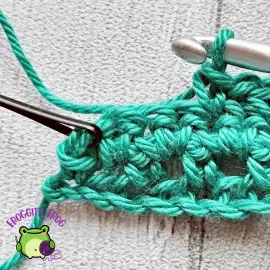
Repeat rows 2 and 3 until you have the number of rows that you need. I would recommend finishing on a repeat of row 2 though, just so that you have a solid top row rather than leaving your last row with a series of chain spaces as is present in the row 3 repeat.
If you’re looking for a project that uses the Sieve stitch, then check out my Free scarf pattern here – it also includes a neat trick on how to easily switch balls of stripy yarn without messing up your stripe pattern.

You can find more free crochet stitch guides here in Froggity Frog’s stitch vault. Come on over to our Facebook group – Froggity Frog’s Ribbit And Stitch and show us what you made with the Sieve stitch. I’d love to see what you created with this super stretchy stitch.
Don’t forget to sign up to our newsletter to be the first to know about new stitch guides and new crochet pattern releases. You can sign up here and be the first to see what I’ve got cooking behind the scenes here at Froggity Frog.


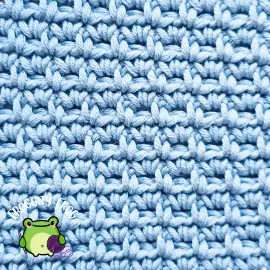



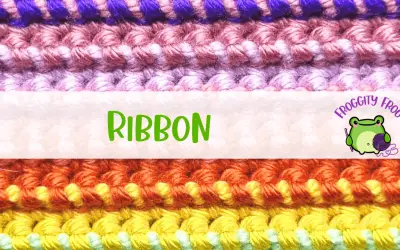
0 Comments